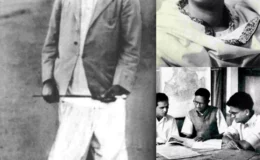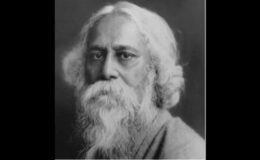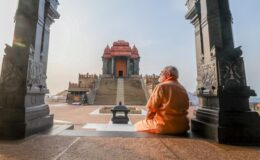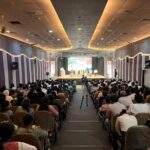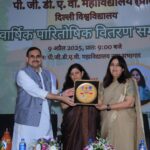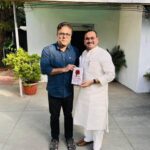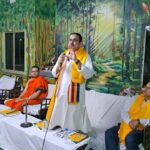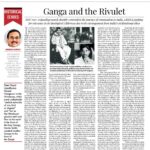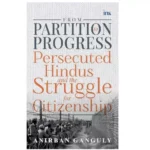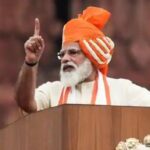BAGHA JATIN, THE FORGOTTEN HERO
- By : Anirban Ganguly
- Category : Articles
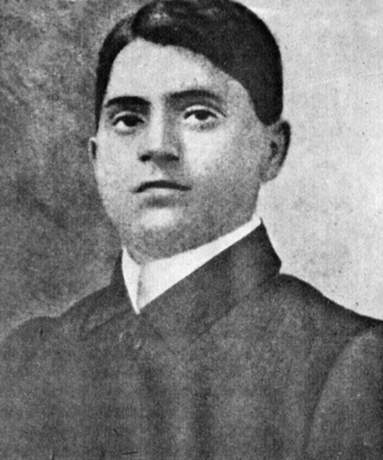
Indian revolutionary nationalist Jatindranath Mukherjee shaped a united revolutionary zeal and nearly succeeded in evolving a pan-Indian and international revolutionary network that challenged the British empire, and would have changed India’s destiny had it not failed
Among the early Indian revolutionary nationalists Jatindranath Mukherjee or Bagha Jatin (1879-1915) was perhaps easily the most striking figure. Combining an almost superhuman reserve of physical strength with an indomitable revolutionary will and an astute and far-seeing political vision along with a masterly capacity of inspiring, bonding and leading the cadres, Mukherjee shaped and manifested a united revolutionary zeal and nearly succeeded in evolving a pan-Indian and an international revolutionary network that challenged the might of the British empire and would have, had it not failed, changed the course of India’s destiny.
In 1915, Mukherjee along with the intrepid Rash Behari Bose planned an all India insurrection which would see support from Germany and aimed to enlist those units of the British Indian Army that would be won over to the cause of the Indian revolution. Planning was undertaken for over two years and saw the setting up of various units across north and eastern India and networks spread far across Southeast Asia, America and Europe. Mukherjee’s contribution to the method of revolution such as “indoctrination of native soldiers, sending emissaries abroad for proper military training and drawing international sympathy to help India wriggle out of slavery” was significant for his times and demonstrated that he was way ahead in terms of planning for India’s liberation.
Quickly analysing the global forces at work and discerning how these could be utilised to further the Indian revolution, Mukherjee “personally met the German Crown Prince” when the latter visited Kolkata in 1912 and “obtained promise for arms for a general uprising.” But destiny intervened when a Czech spy, EV Voska, operating in the US discovered the Indo-German plan of delivering arms from California to India’s east coast and “sold the information” to the British and the Americans thus fizzling out “years of strenuous preparation from Asia, Europe and America.”
Facts also point to the existence of a mysterious “Mr X”, a German agent tasked to see to the success of the supplies but who later turned into a double-agent and gave away the details of the plot to the British. Mukherjee was his composed self when news of this disaster arrived announcing the last days of the planners themselves, “India has to rise with her own strength” he stoically declared. Referring to this falling apart of the plan, a Czech historian has observed that had the spy not “interfered in this history” Bagha Jatin would have perhaps been the ‘Father of the Nation.’
So unwavering was his commitment to the cause of India’s liberation — a commitment ignited in a first meeting with Swami Vivekananda himself — that Mukherjee’s personality and action attracted some of the leading minds of his time. Mukherjee Mukherjee’s biographer, his grandson Prithwindra Mukherjee, himself a pre-eminent historian of the pre-Gandhian phase of the Indian freedom movement who has spent a lifetime chronicling forgotten revolutionary nationalists of India, movingly describes that meeting. In Kolkata participating and organising cholera relief work with the monks of the Ramakrishna Order, Mukherjee was noticed by Swami Akhandananda (1864-1937) who took him to the Swami himself. On seeing Mukherjee Vivekananda put aside his work and looked intently into the former’s eyes. “Fire seemed to devour fire (and) Vivekananda invited Mukherjee to see him whenever he liked.”
These interactions with the Swami became regular and led Mukherjee to further plunge into plague relief work that the Swami had encouraged Sister Nivedita (1867-1911) to lead in and around Kolkata. Nivedita, noticing the young man wrote, “A young man came to me whose one idea is to make Swamiji’s name the rallying point for young India. He is wild about him, and he is such a strong man himself…” She eagerly spoke of Mukherjee to the Swami and again took him in the monk’s presence. The Swami suffused Mukherjee with the spirit of sacrifice. It was not for Mukherjee, he indicated, to take to the ascetic life; India had to be freed and it was for that freedom that he had to aspire and strive for. In his characteristic way, the Swami instructed Mukherjee to “improve his reflex in self-defence” inspiring him to put together bands of dedicated young men who would plunge into national service.
His meeting with Sri Aurobindo in 1903 further ignited the revolutionary fervour in Mukherjee who was “entrusted” with the crucial task of setting up a network of secret societies and to train young men in the ideals of revolution. Sri Aurobindo considered him to be his “right-hand man” whose “very stature was like that of a warrior, a man who would belong to the front rank of humanity.” Mukherjee lived “in communion with what his associates called his soul-force (and) nothing appeared impossible in his presence.” He radiated strength and unshakable faith in India’s free future.
In his life and action Mukherjee, in a sense, embodied the aspiration for strength and recovery that then lay dormant within the subjugated Asiatic psyche. Legions of youth undertook the vows of revolution inspired by his leadership while his own vow was direct, bold and forbidding — amra morbo, desh jagbe — we shall die and the country and people shall awake, he would often say. A series of uprising, Mukherjee argued, would instill deep in the national psyche the “settled will for freedom”, it would not matter then if those who instilled that will lived or faced dissolution in the process.
However, in course of time, especially after independence was achieved, Mukherjee’s legacy, like that of his many other revolutionary compatriots, was allowed to be lost, marginalised or was partially erased or confined. Yet, a hundred years after his martyrdom in the ‘battle of Balasore’ — often referred to as the ‘Haldighati of modern India’, on September 9 1915, (Mukherjee died the next day, fatally wounded in the battle) Mukherjee’s life, legacy and message retain a deep and mesmerising appeal.
The chronicling of his life and times has been mostly done by Prithwindra Mukherjee — through decades of relentless searches and collation. Mukherjee’s personality and the story of the movement he sustained led the legendary French social philosopher and thinker Raymond Aron (1905-1983) to readily accept to supervise Prithwindra Mukherjee’s research on the pre-Gandhian phase of the Indian freedom movement. Aron was fascinated to find in Mukherjee’s revolutionary action that linking phase which provided a continuity to the Indian nationalist movement — he saw that phase as a distinctly successful preparatory period which enabled the second stage under Mahatma Gandhi to take off. It was a phase, argued Aron, which could therefore never be ignored.
In commemoration of Mukherjee’s immortal martyrdom, the Kolkata-based Institute of Social and Cultural Studies has launched a pan-nation programme. As part of that commemoration, Bangladesh will honour Mukherjee in Kushtia, his birthplace, in a grand public programme by deputing some of its senior most Cabinet Ministers and intellectuals to pay homage to his memory. This is to be followed by a two-day public programme and a conference in collaboration with the Fakir Mohan University in Balasore where Mukherjee attained martyrdom. Perhaps someday a full-fledged national museum in memory of India’s revolutionary nationalists may also come up dedicated to narrating and preserving their legacies for posterity.
Many of his associates saw in Mukherjee “the very personification of the Gita…” and perceived him as someone who had “gone closest” towards attaining the “integral perfection” enunciated in it. His ideal thus can never cease to inspire and we shall always need many more such as him to push forward the wheel of India’s destiny…

